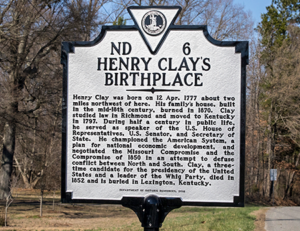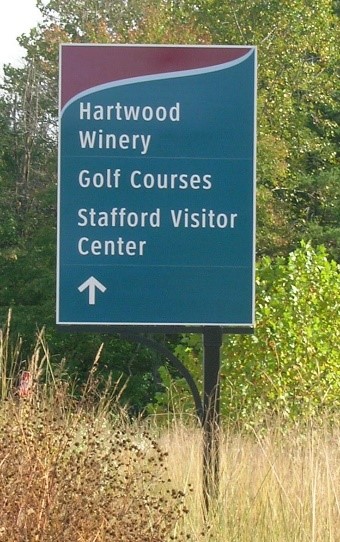Sign programs
Specific Travel Services (Logo) Signs

Logo signs guide motorists to specific gas, food, lodging, camping and attraction locations along Virginia’s interstates and limited-access highways.
Participants pay an annual fee per sign for each mainline (which includes ramp) and trailblazer sign, depending on the traffic volume at the interchange. Directional Signing Program LLC (DSP) is responsible for all costs associated with the construction and maintenance of logo signs.
Logo program participants can have DSP fabricate the logo plate, or the customer can provide their own logo plate (to be attached to the blue background panel).
As directed by Chapter 491 of the Virginia Acts of Assembly – 2005 Session (Senate Bill 813) – VDOT reviewed its Logo Sign Program’s fee structure to ensure the program is not used to generate excess revenue beyond a 10 percent margin to operate the IDSP.
The Commonwealth Transportation Board approved VDOT's recommended fees on June 16, 2005.
Tourist-Oriented Directional Signs (TODS)

TODS are used along roads that do not have limited access, such as most primary and secondary highways, to guide motorists to businesses, services, recreation and other facilities nearby.
TODS participants pay an application fee, as well as an annual fee for each sign panel. DSP is responsible for all costs associated with the construction and maintenance of the TODS structures.
Supplemental Guide Signs (SGS)
SGS direct motorists to specific cultural, recreational, historical, governmental, educational, military and other sites of similar interest on limited access, primary, or secondary roadways.

Commercial customers pay an annual fee to assist in the administration of the IDSP and are also responsible for all costs associated with the fabrication, installation and maintenance of their sign. The fee structure exempts nonprofit and governmental entities from paying annual fees.
However, these entities are required to pay the cost to fabricate, install, maintain and replace the SGS.
SGS may have a green, brown, or blue background:
- Tourist information centers, police, and Department of Motor Vehicles signs are on blue backgrounds
- Destinations that are recreational, historical, or cultural are placed on brown backgrounds
- Schools, other government facilities, colleges and universities are placed on green backgrounds
General Motorists Service Signs (GMSS)
 GMSS use standard symbols to advise motorists of participating facilities nearby.
GMSS use standard symbols to advise motorists of participating facilities nearby.
The facility requesting the GMSS pays for fabrication and installation of the sign.
However, VDOT maintains the GMSS program with IDSP funds.
Historical Markers

Historical markers along VDOT’s right of way are also under the umbrella of the IDSP.
Moving forward, DSP will be responsible for the installation and maintenance of historical markers on VDOT right of way.
However, the Department of Historic Resources (DHR) oversees the approval, location, and content of the historical markers.
Visit the DHR at https://www.dhr.virginia.gov/highway-markers/ for more information on applying for a historical marker.
Programs Outside The IDSP
Community Wayfinding Sign (CWS) and Community Gateway Sign (CGS) Programs

The CWS and CGS Programs are specialty programs not directly associated with the IDSP or the IDSP contractor, but are managed by the IDSP team. Wayfinding programs and Gateway signs are considered an integral part of promoting tourism and competing for economic benefits.
A well-crafted wayfinding sign system provides an opportunity to educate and inspire the travelling public and promote visitation to some of Virginia’s great destinations. With this understanding, VDOT collaborated with industry stakeholders to develop the Community Wayfinding Sign Program Manual.
The manual provides specific guidance on how to develop and implement wayfinding sign programs on the VDOT road network. It builds upon the guidance provided in the Manual of Uniform Traffic Control Devices (MUTCD) and offers supplementary policies, procedures, and guidelines unique to Virginia so wayfinding signs can coexist with other essential directional and guide signs.
Gateway signs may be developed as part of a comprehensive Community Wayfinding system or may be developed separately without wayfinding signs in accordance with our Gateway Sign Guidance Document. VDOT encourages the use of the Community Wayfinding Manual and Gateway Sign Guidance Document and offers support and guidance to those communities interested in the development of a wayfinding or gateway program. Both programs (CWS and CGS) are implemented under the auspices of a Local VDOT Land Use Permit.



